|
|
You can think of Ametrine as a gemstone quality quartz crystal which when growing up could not decide whether it wanted to be an Amethyst or a Citrine, and so developed a "split personality". The Anahi Mine in Bolivia is the world's primary source of ametrine. The mine first became famous in the seventeenth century when a Spanish conquistador received it as a dowry when he married a princess from the Ayoreos tribe named Anahi. Ametrine was introduced to Europe through the conquistador's gifts to the Spanish queen. Small deposits of Ametrine were discovered both in Brazil and Canada during the twentieth century. There is evidence of a medieval source of ametrine in Scotland, perhaps in the general vicinity of the Devonian lava beds in Angus, Scotland. There are also ancient references to ametrine from Persian, Roman, and Greek sources. Anecdotal evidence seems to suggest an ancient source of ametrine in India, and indeed ametrine was (re)discovered recently in the Indian state of Andhra Pradesh near Hyderabad, an ancient city which was a trading center on the camel caravan route which crossed to Persia and Europe on one side, and China and Russia to the other side.
|
Ametrine Gemstone:
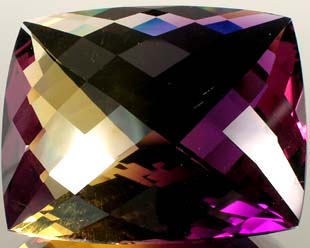
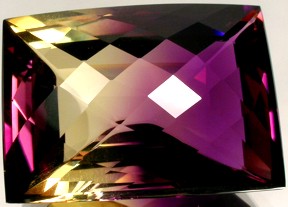
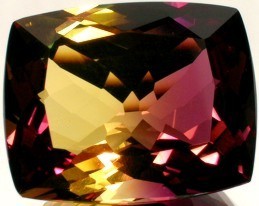
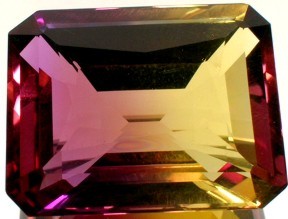
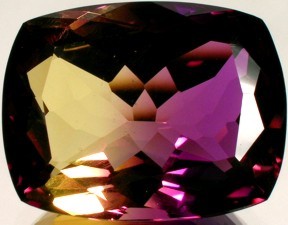
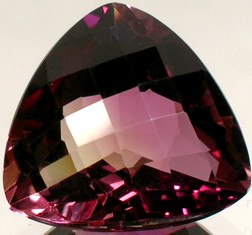
|
Ametrine is a variety of quartz, and is of course closely related to both amethyst and citrine. Amethyst was one of the first gemstones used by man. The name is derived from the Greek term "amethustos", meaning not drunk. Amethyst came to Greece from Egypt just after the death of Alexander the Great. Most ancient Mediterranean cultures believed that amethyst would protect against becoming intoxicated, and would protect soldiers from harm in battle. Throughout ancient and medieval history, the color purple was traditionally the color of royalty. Consequentially amethyst was historically the most highly valued variety of quartz. Amethyst has been used since the dawn of recorded history to adorn the wealthy, as well as royalty, and was extensively used since ancient times for carving intaglio gemstones and seals. Amethyst is also mentioned in the Bible (Exodus 28:19; 39:12) as one of the 12 stones adorning the breastplate (hoshen) of the high priests of Yahweh.
Citrine takes its name from the Latin "citrus" for citrus tree. Natural citrine is actually somewhat rare in nature. Citrine was popular in the late Victorian era and was often set with other semiprecious stones such as bloodstones, carnelian and garnets. The Greeks and Romans used Citrine for intaglios and as cabochon (polished) gemstones during the first and second centuries. The gemstone was worn as a protective talisman and used for medicinal purposes. The Romans and Greeks believed it to be the crystallized essence of sunshine, and believed it would aid in digestion and cleanse toxins from the body. Citrine was carried as protection against snake venom. Amethyst, citrine, and ametrine; like all quartz crystals, produce an electric voltage, a property known as piezoelectric. Unable to understand the characteristic, ancient cultures attributed many mystical properties have been attributed to the various varieties of quartz gemstones. Quartz gemstones were believed to act as psychic purifiers, tuning one into their inner "vibrations". It was believed that quartz possessed the ability to amplify emotions, enhance concentration and intuition, and neutralize "negative energies".
|
|
|